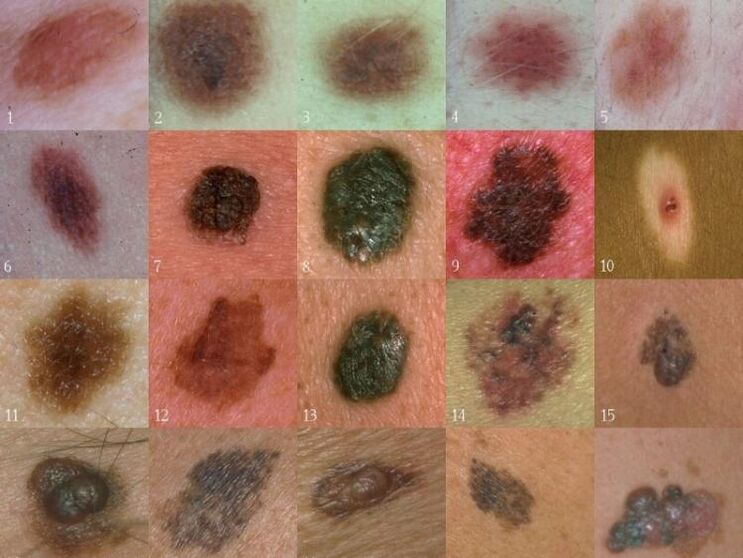
Some types of human papillomavirus, which infiltrate damaged areas of the skin, cause cells to grow rapidly on its surface. As a result, warts appear. The types of warts can be different. They occur anywhere on the skin and can vary greatly in size and color. Usually, warts do not cause significant problems, they go away on their own. However, in some cases it is worth consulting a doctor and eliminating them.
The types of warts on the body usually vary according to the location.
Types of warts
- Vulgar (general)
- plantar,
- Straight (youth),
- Genital warts (genital warts)
- filiform,
- Aging (seborrheic keratomas).
Common warts
Vulgar or common - this is the most common type of these neoplasms. They are small nodules with a rough surface (up to 10 mm). They protrude slightly above the surface of the skin and are completely painless. Common warts can occur anywhere on the body, but most often occur in the neck, head, elbows or knees.
Another feature of common warts is the appearance of the "main" wart, next to the smaller ones.
Plantar
This is one of the most common types of warts, also called Spitz. Located on the skin of the foot, mostly on the side of the heel. It consists of several papillae connected to each other and surrounded by a roll. Sometimes Spitz looks like a dense thorn growing on the skin. Sometimes plantar warts can grow inside the skin. Then they look like a fossa surrounded by a roller with a protruding papilla. Plantar warts often cause discomfort to a person because they cause discomfort and even pain while walking.
Their formation can be provoked by tight or uncomfortable shoes. In such shoes, areas of the skin are damaged and become more susceptible to the penetration and development of human papillomavirus.
straight
Flat warts are more common at an early age, in children and adolescents, and are therefore called youth. These are small formations (usually about 3 mm). They can be round or irregular. The surface of juvenile warts is smooth and straight. The color is generally the same as the skin, sometimes flat warts can have a yellowish color. These types of warts can occur anywhere on the skin, but their "favorite" areas are the face and hands.
Flat warts usually do not cause physical discomfort and disappear over time. However, when placed in prominent places, they cause aesthetic discomfort, so patients often turn to doctors and cosmetologists to eliminate them.
Genital warts
Such warts are localized in the genital area and the infection occurs during sexual intercourse. The most common areas of genital warts are the groin, penis, labia and anus. These types of warts can also occur in the mouth.
Genital warts are small skin growths with sharp tips and small papillae. These papillae join together and often resemble cauliflower. The color of genital warts is dark flesh, pink.
Treatment of genital warts is performed by dermatovenerologists in the presence of a gynecologist or urologist.
Filiform
Filiform warts (acrocords) are more common in older people. They are elongated growths resembling a rope. The size of filamentous warts can be up to 1 cm. The localization of the chord is the skin of the neck and face. They often appear on the eyelids and lips. There are filamentous warts under the arms.
Chords are often damaged due to their elongated shape. Spontaneously, in most cases, they do not go away, and after removal, there are often relapses with the appearance of new warts in the same places.
Old
Seborrheic keratomas most often develop due to skin changes in old age. They are located anywhere on the body, but mostly on the neck, arms, chest. These are small flat papules with clear borders. Older warts are more often yellow-pink or brown, up to 2 cm in size. They can be alone and can create all the tricks. Such neoplasms are based on dead skin cells. At first they are soft, but over time they become dense, covered with cracks.
Older warts require careful attention because they are prone to malignant transformation.
Thus, there are different types of warts. Most of them are harmless, but it is better to see a doctor immediately and make sure.














































































